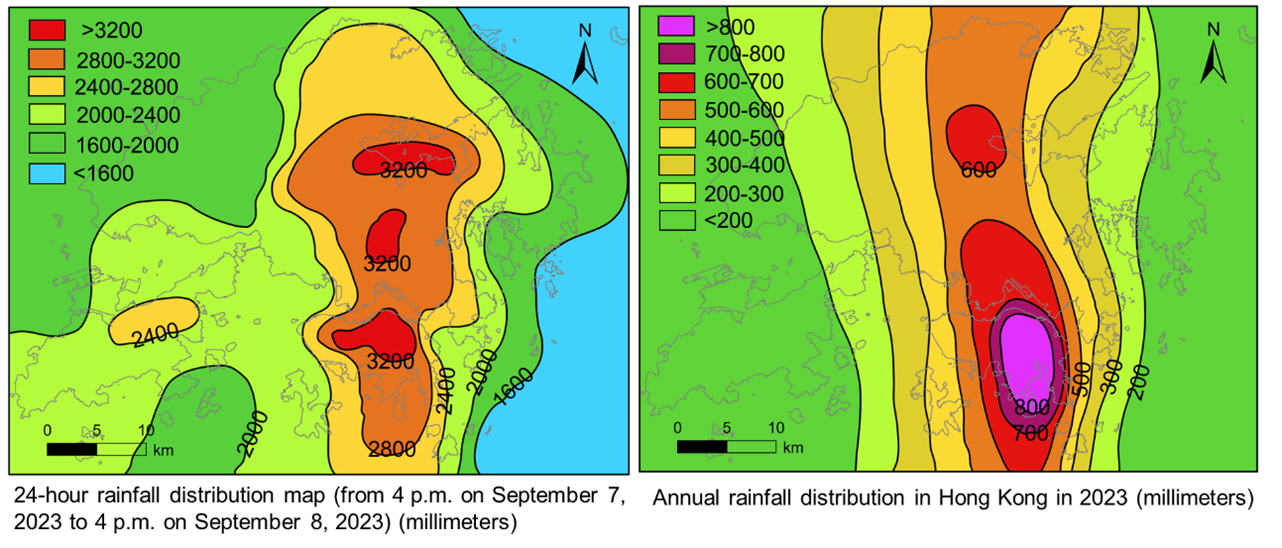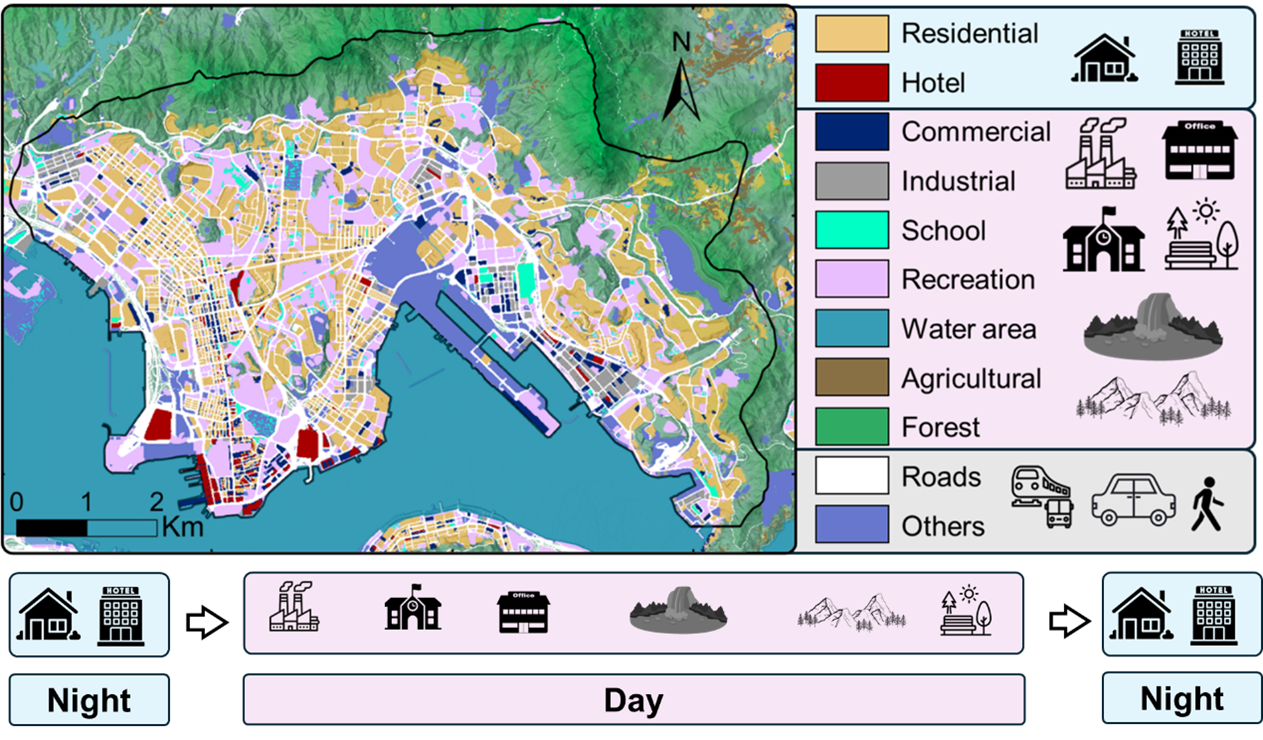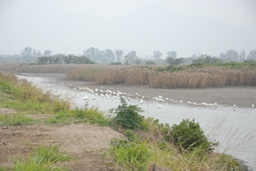Chasing Crowds: How Human Mobility Amplifies Climate Flood Risks
Published in Social Sciences and Plant Science

Chasing Crowds: How Human Movement Amplifies Climate Flood Risks
(The story behind the paper published on Communications Earth & Environment)
Revelation in Flooding in Hong Kong and Surrounding Coastal Areas
The Super-typhoon “Saola” triggered the city's highest alert level on September 1-2, 2023. Just days later, remnants of the Tropical Cyclone “Haikui” brought unprecedented rainfall: 158.1 mm in just one hour between 11 PM and midnight on September 7, 2023, marking the highest hourly rainfall on record. The total rainfall from September 7-8 exceeded 800 mm, nearly a quarter of Hong Kong's annual accumulation of 3,200 mm for 2023 (see statistical data plots in the figure below). As a result, streets transformed into rivers, subway stations flooded, and entire neighbourhoods vanished under torrents.

While we were conducting field surveys in the flooded streets of Kowloon during this catastrophe, it became clear that our understanding of urban flood risk needed to change. The Wong Tai Sin MTR Station, once bustling with thousands of commuters just hours earlier, became an underwater cavern. Meanwhile, the residential areas in Yau Tsim Mong, which appeared safe during business hours, were filled with stranded residents facing rising waters. This stark contrast highlighted a troubling realization: flood risk is not just about where disasters occur, but also about when they happen and who is present.
Tracking the Moving Targets
Our research started with a fundamental question: What if millions of people navigate different areas of the city daily while facing such challenging situations?
Traditional assessments usually treat cities as static landscapes with fixed populations. However, vibrant cities like Hong Kong are anything but static (see a typical scenario in the figure below). Each morning, a significant number of people commute from residential areas to commercial districts, only to return in the evening. This daily movement leads to fluctuating risk patterns that conventional methods often overlook. To address this, we developed a dynamic flood risk assessment that incorporates human mobility patterns by integrating demographic data, travel surveys, and real-time location data with advanced hydrodynamic modeling across 75 flood scenarios (see details in our paper: Long & Duan, et al. 2025).

When Crowds Meet Flood
Our findings were striking. The compound flood risk fluctuates by as much as 20%, influenced by time periods of a day and whether it's a weekday or weekend. Commercial areas like Tsim Sha Tsui face peak risk during weekday business hours, when hundreds of thousands of people gather in low-lying harbour zones. Conversely, the residential areas experience the highest risk at night, as families return home. Moreover, the regions within about 680 m of the coastline—many of which are reclaimed lands (at about 650-700 m)—face significantly heightened risks, particularly under future climate projections. Our analysis reveals that the Night-Day Risk Ratio (NDRR) is expected to increase from 18.7% to 20.6% in future scenarios, indicating that nighttime flooding could become one-fifth more hazardous than daytime events by 2100.
Racing Against Time
With annual rainfall projected to increase by 16-29% by the end of this century, the intersection of climate change, urbanization, and human mobility presents a significant challenge for cities, particularly in coastal areas. Our research quantifies what residents encounter each storm season: the risk patterns in these coastal cities are fundamentally changing, and traditional flood management strategies are failing to keep pace. As coastal cities like Hong Kong confront an uncertain climatic future, this research offers crucial insights. It allows us to anticipate not only which areas will flood but also who will be at risk and when. This proactive approach is essential for developing effective flood management strategies that can adapt to the evolving landscape of urban risks under climate change.
Follow the Topic
-
Communications Earth & Environment

An open access journal from Nature Portfolio that publishes high-quality research, reviews and commentary in the Earth, environmental and planetary sciences.
Related Collections
With Collections, you can get published faster and increase your visibility.
Geology of the Moon
Publishing Model: Hybrid
Deadline: Jan 31, 2026
Drought
Publishing Model: Hybrid
Deadline: Dec 31, 2025





Please sign in or register for FREE
If you are a registered user on Research Communities by Springer Nature, please sign in